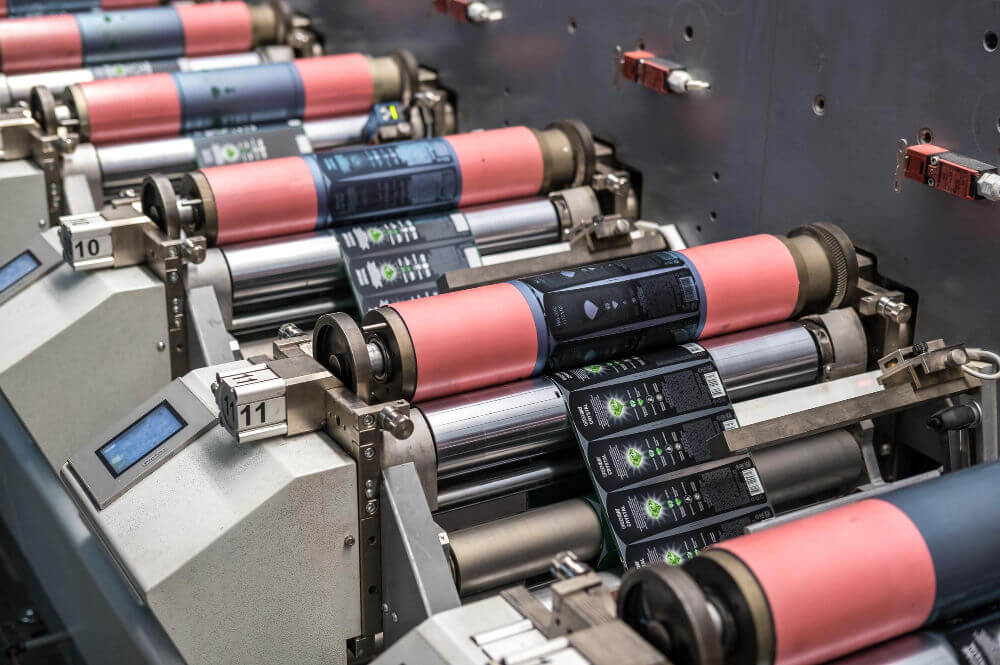Polygraphy, also known as the printing industry, is a field dealing with the printing and reproduction of many copies of a single design. This broad field covers a variety of technologies and processes, from traditional printing methods to modern digital technologies. Polygraphy is a key element in the production of printed matter, from simple leaflets to complex packaging, as well as the production of newspapers, books and many other materials.
Polygraphy and its history
The history of polygraphy dates back to antiquity, when the first forms of printing were based on manual reproduction methods, such as woodcut or linocut.
Gutenberg’s invention and the pre-revolutionary era
In 1440, German goldsmith and inventor Johann Gutenberg started a communications revolution by inventing movable type and the printing press. This event is considered a turning point in the history of printing, enabling the mass production of books and documents. The first book printed using the Gutenberg technique was the Bible, which accelerated the spread of knowledge and culture throughout Europe.
The development of printing in the Renaissance
During the Renaissance, printing became a key tool for spreading humanistic and scientific ideas. Printing houses across Europe expanded and new content became available to a wider audience. This made it possible to spread ideas faster and develop scientific theories.
Evolution of printing technology
In the following centuries, there was constant progress in printing technology. In the 18th century, the first mechanical presses appeared, which accelerated the printing process. In the 19th century, offset printing revolutionized the production of books, newspapers and magazines, enabling more efficient and cheap printing.
Journalism and mass printing
In the 19th century, the development of the mass press had a huge impact on shaping public opinion. Newspapers became the main source of information, and the development of photo printing enriched the possibilities of communication. Journalism has become a powerful tool for influencing society.
Digital revolution and computer printing
In the second half of the 20th century, another revolution in printing took place – the introduction of computer printing. Computers have made it possible to design and print materials with incredible precision and flexibility. Digital printing has become the norm, enabling personalization and customization of content.
3D printing and innovation
Nowadays, in the era of digital technology, printing continues to evolve. 3D printing opens new possibilities in the production of three-dimensional objects, and nanoprinting technologies allow the creation of microscopic structures. Therefore, innovative materials and production processes influence increasingly complex ways of transmitting information.
In the history of the world, polygraphy has fueled an incredible development in non-verbal and visual communication, which continues to surprise us with newer application techniques to this day.
Traditional printing methods
1. Offset
The method is that the image is first printed on a special surface and then transferred to paper. This is one of the most frequently used techniques in polygraphy. More information on this topic can be found in our article: Offset printing: Precise image on paper
2. Typography
It uses groups of fonts to form an image on paper. This is a traditional approach to printing that is still used today, especially in smaller printing plants.
3. Screen printing
This technique uses screens that are covered with paint and pass it through holes into the substrate. It is often used to print on various materials, such as fabrics, ceramics or glass. For more information, please see the article: Screen Printing: The Art and Technology of Printing
Polygraphy and digital technologies
1. Digital printing
It includes various methods such as electrophotography (laser) and inkjet. This type of printing allows for quick and flexible adaptation to individual needs, eliminating the need for matrices or printing plates.
2. 3D printing
This is an innovative approach that allows you to create three-dimensional objects. Although it is not yet widely used in traditional printing, it is developing and gaining popularity in some industries.
Applications of polygraphy
1. Advertising and marketing
Polygraphy plays a key role in creating advertising materials, such as leaflets, posters and catalogues. It is essential in building the brand image and attracting customer attention.
2. Packaging
The food, cosmetics and pharmaceutical industries could not function without appropriate packaging. Printing allows you to create aesthetic and functional packaging that attracts the attention of consumers.
3. Book printing
Traditional and digital printing methods are crucial to the production of books, magazines and other publications. Thanks to them, a variety of content is made available to a wide audience.

Are you interested in working with us?
Go to the contact tab or
Summary
Polygraphy is an extremely important field that has evolved from simple manual methods to advanced digital technologies. Its importance in today’s society is difficult to overestimate, relating to various areas of life, from business to education and entertainment. As technology continues to develop, you can expect the polygraphy to continue its transformation, introducing innovative solutions and contributing to increasingly effective information transfer.









